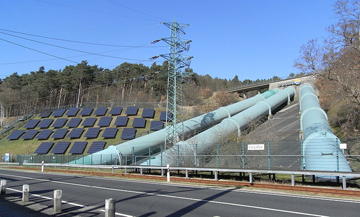As many people in the United States question whether renewable energy is a viable alternative to fossil fuels, Germany now derives 20.8 percent of its electricity from renewable sources—a 15 percent increase since 2000, reports Der Spiegel. In contrast, the United States generates only 10 percent of its electricity from renewable sources, 6 percent of which comes from hydroelectric power, which some environmentalists see as unacceptably damaging.
In the last year alone, Germany’s share of renewable electricity increased from 18.3 to 20.8 percent, and the country plans for further growth. German Chancellor Angela Merkel’s government aims to derive no less than 35 percent of the country’s energy from renewable sources by 2020. Opposition parties believe 40 or more percent of Germany’s energy could be sustainable by 2020.
Over the past decade, wind and biomass have fueled Germany’s growth in clean energy. In 2011, however, photovoltaic (solar energy) began driving growth in the renewable energy sector—even though Germany receives roughly the same amount of sunlight as Alaska. Photovoltaic solar power increased more than 76 percent in the past year and now accounts for 3.5 percent of electricity production—
more than hydropower. Considering hydroelectricity contributes only 3.3 percent of Germany’s power, the share of solar, wind, and biomass derived energy has grown considerably.
“The renewables are showing their true potential, and that is in spite of numerous attempts to obstruct their progress,” Anike Peters, an energy expert with Greenpeace Germany, told the Christian Science Monitor.
 Energy park in Germany: solar on the left, hydro on the right. Photo by: Quartl. |
Good policy incentives are behind Germany’s success, says a new report by the German Association of Energy and Water Industries. The country’s Renewable Energy Act has provided investors and manufacturers of renewable energy an assured market. Merkel’s center-right government recently raised incentives for the production of wind, biomass, and geothermal fuels. Deutsche Bank ranked the country’s feed-in tariffs “best in class,” and also gave the country’s energy and climate policy strong approval.
German consumers pay the costs of feed-in tariffs, currently 3.5 cents per kilowatt-hour. A poll by TNS Infratest suggests 79 percent of Germans are willing to pay this premium and would not be opposed to an even higher tariff.
“Most people seem to understand quite well how much value sustainable energy sources add to their lives, and so they are prepared to accept new technologies even where they pop up right in front of their homes,” Phillipp Vohrer, director of the German Renewable Energies Agency, told the Christian Science Monitor.
However, the road to a sustainable future is not without conflict, even in Germany. Germans are willing to pay higher electric bills, but they resent renewable energy infrastructure—
such as windmills and high-voltage power lines—
in their neighborhoods, even actively campaigning against these projects. Given that Germany will require 3,000 kilometers of new power lines by 2025 to decentralize its power-grid to include green electricity, such disputes are prime to drive conflict.
Germany’s government has been motivated considerably by the recent nuclear catastrophe in Fukushima, Japan. In October 2010, Chancellor Merkel’s government moved to extend the life of Germany’s nuclear power plants 14 years, rejecting her predecessor’s plan to phase out the reactors, despite tens of thousands of protesters in Berlin. However, The Fukushima Daiichi nuclear incident deeply shook Merkel’s government, which then voted to end the use of nuclear power. If the country sticks to its
legislated goals, Germany should complete a phasing-out of nuclear power by 2022.
Related articles
Has the green energy revolution finally arrived?
(05/17/2011) When historians look back at the fight to combat climate change—not to mention the struggle to overcome our global addiction to fossil fuels—will 2011 be considered a watershed moment? Maybe. In the last couple months, three countries—each in the top ten in terms of GDP—have suddenly made major renewable energy promises. Germany, Japan, and, just today, Britain are giving speeches and producing plans that, if successful, could be the global tipping point needed to move beyond fossil fuels to, one day, a world run entirely on green.
New record in global carbon emissions ‘another wake-up call’
(05/31/2011) Global carbon emissions hit a new high last year proving once again that international political efforts, hampered by bickering, the blame-game, and tepidity, are failing to drive down the greenhouse gas emissions that are causing the planet to heat up. According to the International Energy Agency (IEA), following a slight fall in carbon dioxide emissions due to the economic downturn, emissions again rose to a new record level in 2010: 30.6 gigatons. This is a full 5 percent higher than the past record hit in 2008. The new record puts greater doubt on the international pledge of limiting the global average temperature rise to 2 degrees Celsius.
Vietnam plans to build 90 coal plants
(06/12/2011) Vietnam’s government has announced plans to build 90 coal-fired plants over the next 15 years even while being listed as among the top 11 most vulnerable nation’s to climate change in the world, according to Eco-Business.
